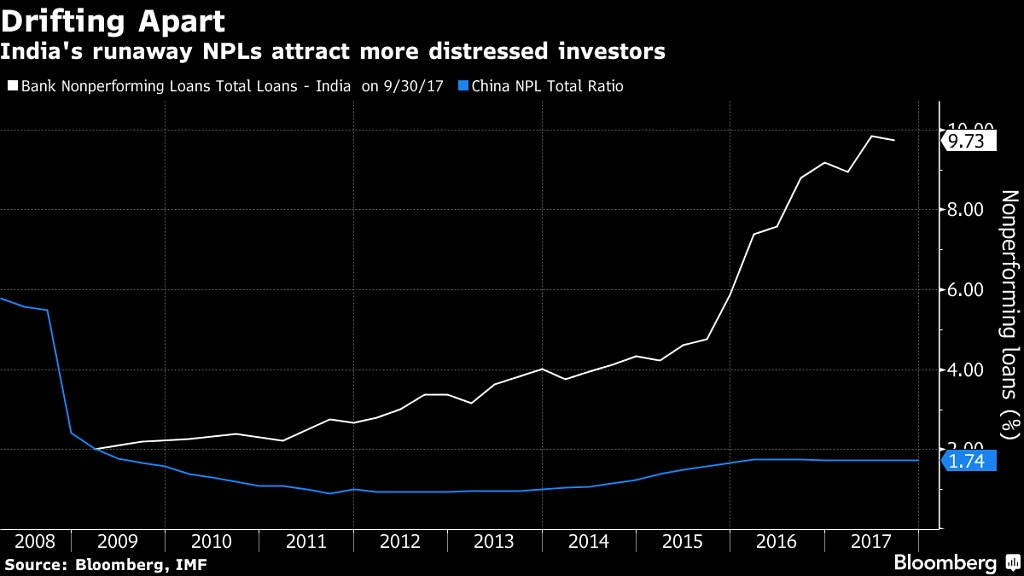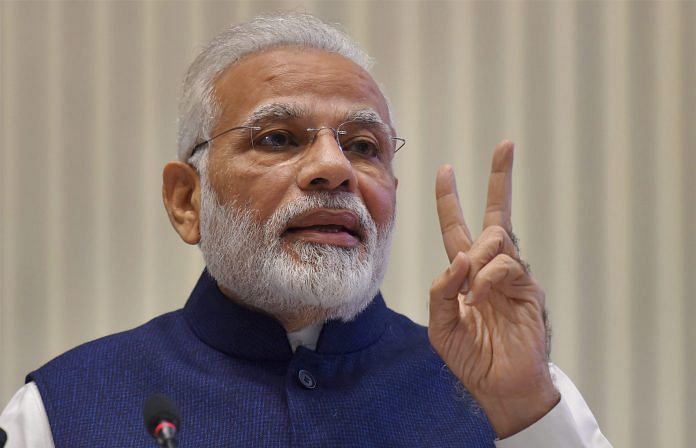Cleaning up India’s stressed loans has been a big priority of Prime Minister Narendra Modi in order to attract investments to the country.
SC Lowy Financial HK Ltd. said it will trade more distressed debt in India, which has become its most important market in Asia, thanks to a hefty supply spurred by the rollout of a new bankruptcy law.
India now accounts for 30 to 40 percent of the Hong Kong-based loan and bond trading firm’s activities, up from 10 to 15 percent just a year ago, said Soo Cheon Lee, its co-founder and chief investment officer. Previously, it was more or less evenly spread in Australia, Korea, China, India, South East Asia and the Middle East.
“India is the main market for distressed debt in Asia for us,” Lee said in an interview. “It’s because of the Modi government’s initiative to clean up non-performing loans at its lenders” and the “amazing” execution of the new insolvency law, he said.
Cleaning up India’s stressed loans has been a big priority of Prime Minister Narendra Modi in order to attract investments to the country. The new insolvency resolution process, born in 2016 after the the government overhauled its archaic bankruptcy laws, was designed to clear out distressed companies through asset sales.

Among companies under the resolution process are Essar Steel India Ltd., Aircel Ltd. and Bhushan Steel Ltd. A $2 billion bank fraud at Punjab National Bank will also likely add to the supply of distressed loans.
As a foreign financial firm, it is easier to do business in India than in China, where local partnerships are usually required, Lee said. High returns of about 15 percent from its distressed debt investments in India is a draw too, he said.
Rising bankruptcy cases in the South Asian nation are presenting new opportunities for hedge funds focusing on the latest fallout in banking and other key industries. Regulatory pressure for banks to recognize bad loans has also led to a 30 percent jump in non-performing loans, Fitch Ratings said in a Feb. 22 note.
“The government is fine-tuning the bankruptcy process, which has to continue as they are cleaning up the NPLs,” Lee said. “It is still just the beginning and we expect this to last for at least 1-2 years.” — Bloomberg






